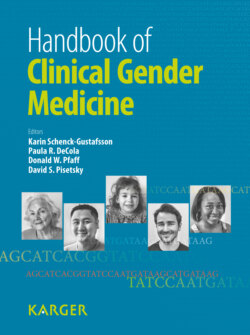Читать книгу Handbook of Clinical Gender Medicine - Группа авторов - Страница 95
Summary of Allostatic Load Research Findings
ОглавлениеA recent review by Juster et al. [8] of nearly 60 empirical studies suggests that AL indices incorporating subclinical ranges for numerous biomarkers (mean = 10; range = 4-17) predict clinical outcomes better than traditional biomedical methods that address only clinical thresholds for single biomarkers. Importantly, AL inclusion of neuroendocrine and/or immune biomarkers is stronger than metabolic syndrome parameters or systemic clusters.
As summarized in table 1, increased AL indices correspond either cross-sectionally or longitudinally to a plethora of antecedents (e.g. socioeconomic disadvantage, poor social networks, workplace stress, maladaptive personality traits, lifestyle behaviors, genetic polymorphisms, etc.) and consequences (e.g. mortality, cardiovascular disease, psychiatric symptoms, cognitive decline, physical/mobility limitations, neurological atrophy, etc.). Individual differences in unique configurations of these antecedents should be explored further, as they are experienced differently by each sex throughout life and are strong mediators and/or moderators of AL consequences.
